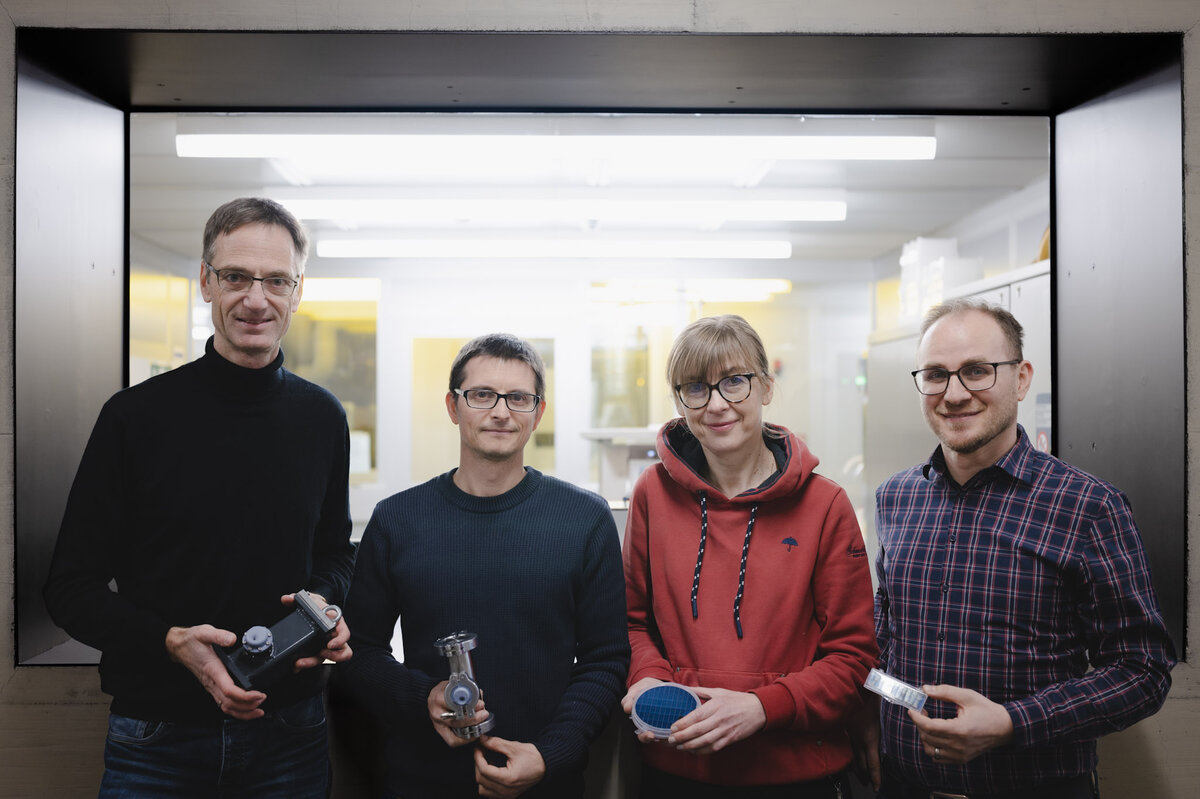Electrochemical sensor for fresh and salt water
(Issue 1 / 2025) Monitoring water quality is crucial for understanding and protecting marine ecosystems. In marine biology, continuous monitoring of water quality contributes significantly to a better understanding of the effects of climate change on biological processes in the waters.

Collaboration at FHV and the question of why
The aim of the FFG COIN project DEEP11 is to develop and manufacture a sensor specifically designed for environmental monitoring and measuring the effects of global warming. This is a collaborative FHV project between the Microtechnology Research Centre and the Smart Engineering Technologies (SET) research group. The innovative sensor system is designed to monitor three environmental parameters: O₂ concentration, pH value and temperature. Rising temperatures and climate change are caused by greenhouse gas (GHG) emissions. The most important anthropogenic GHG is carbon dioxide. High CO₂ emissions into the atmosphere lead to an increase in CO₂ concentration in the oceans and consequently to a decrease in pH. Aquatic organisms are adapted to specific pH ranges, and a sustained pH value outside this range can have a negative impact on their survival. In particular, invasive algae types can disrupt or even prevent the formation of other communities. However, it is not only the pH value that plays an important role in underwater ecosystems, but also dissolved oxygen, which provides information about photosynthetic activity. Only the development of a miniaturised sensor system makes it possible to monitor critical environmental parameters at different water depths by setting up a sensor network.
What does the sensor system consist of? – Innovation at FHV
The sensors to be developed are based on electrochemical measurement methods. Electrochemical sensors measure electrical signals that correlate with the parameters to be determined. All three measured variables, O₂ concentration, pH value and temperature, are recorded on a single chip and form a sensor system. The Microtechnology Research Centre is responsible for the development, manufacture and characterisation of the sensor chip. The operation of the sensor system is ensured by the electronics developed by the SET research group.
How and where will the finished sensor system be used?
The aim is to use the newly developed, autonomous system of miniaturised sensors in natural ecosystems. Specifically, such a sensor system is to be placed near the coast to monitor the growth of newly planted kelp fields. The sensor with its power supply electronics will be submerged in a waterproof housing near the coast. The three measured variables will be recorded over a longer period of time. The measured data will then provide information about photosynthetic activity at different water depths. The final phase of the project, testing the sensor system under natural conditions, will take place in Portugal on the Atlantic coast. This continues the collaboration between the Microtechnology Research Centre and the Polytechnic University of Leiria, which was established as part of the RUN EU consortium. The results achieved so far will be presented at the ‘Biosensors 2025’ conference.


